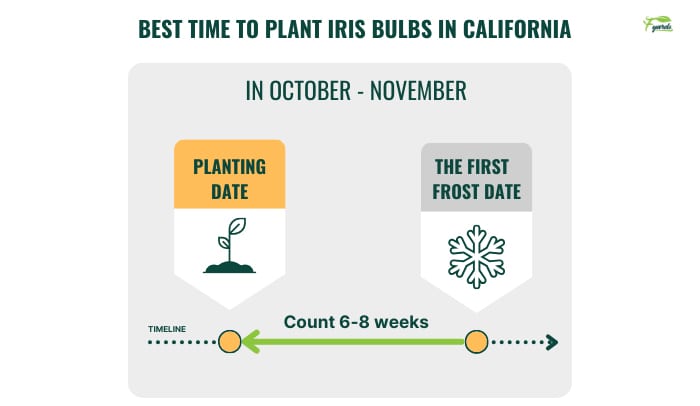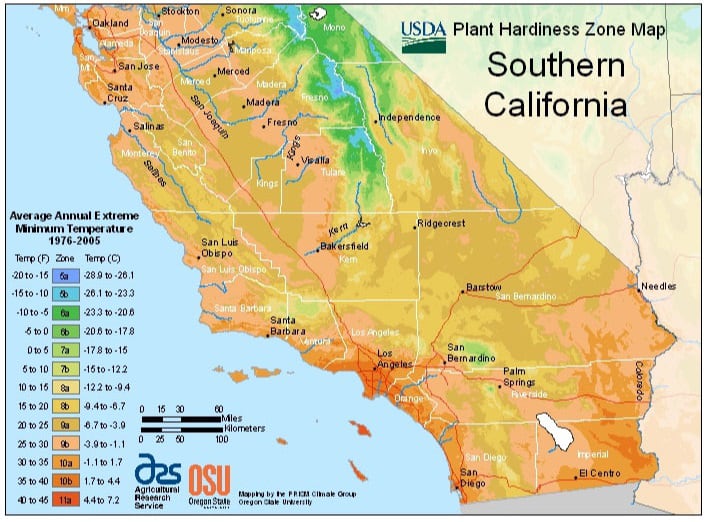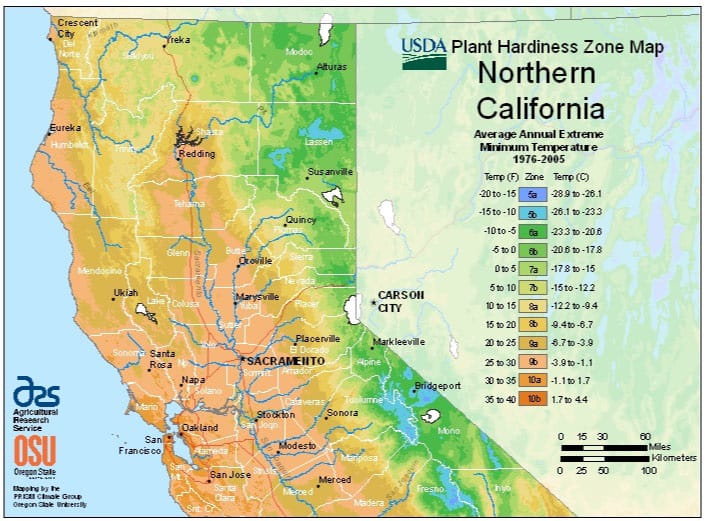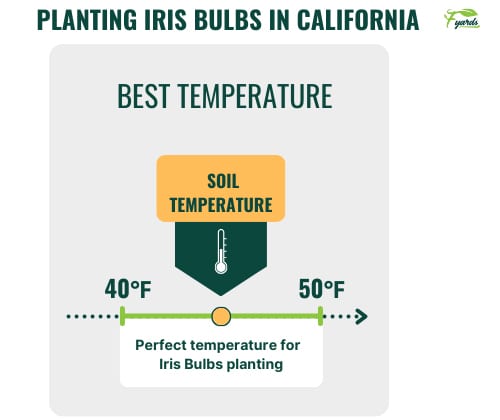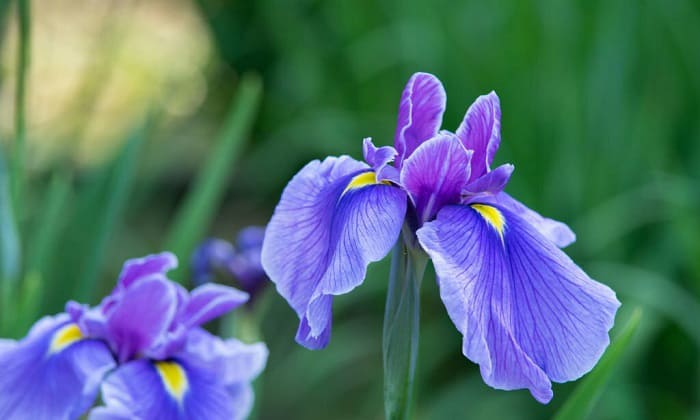Ornamental plants like irises make your yard look extra lovely, not only because they’re very pleasing to look at but also because they have a perfect fragrance that can soothe your mood.
Knowing when to plant iris bulbs in California is necessary if you want to ensure that they grow healthy. So, plant them from October to November, 6-8 weeks before the first frost.
To have successful growth, read further to learn the proper planting time!
Table of Contents
Best Time to Plant Iris Bulbs in California
1. Plant in October through November in the fall
Behind the successful blooms of iris bulbs in the spring is the adequate cold temperature in the fall through winter that helps them grow well and produce extravagant blossoms.
Fall planting is perfect for irises because the soil is not yet covered with frost, but this period has cold temperatures and moist conditions that these plants require for healthy growth.
In Southern California, October to November is the ideal time for planting them. But the best time to plant iris varieties is 6 to 8 weeks before your first frost starts.
For example, if you live in Davis, Northern California, your first frost will fall on December 28th. Therefore, you will need to sow these bulbs between November 2nd and 16th.
In Dublin, you may experience an early start of frost, which happens on October 26th. So, the best time for growing irises in this region is around August 31st to September 14th.
Now, is it too late to plant irises in December? Absolutely not! Since different places have their own start of the freezing period, your planting time will depend on where you live.
In Berkeley, the first frost starts as late as January 31st. Therefore, you can plant as late as December 6th to the 20th.
As for other locations, here are some of the first frost dates of other cities for your reference.
| Location | First Frost Date |
| Antelope | November 21st – 30th |
| Belmont | December 21st – 31st |
| Corona | January 1st – 10th |
| Moreno Valley | December 1st – 10th |
| Porterville | November 21st – 30th |
Although October through November is the average time for planting irises, the specific date for sowing them really depends on your first frost date. Therefore, it is best to know your region’s frost period.
2. Plant iris bulbs once temperatures decrease to 40° and 50°F
One reason autumn is the best season to plant these cold-loving bulbs is because the temperature goes down between 40° and 50°F.
This range is perfect for their development because it will allow them to develop robust roots before winter with the help of moderately warm soil. And once their roots get established, they will survive the chilly climate.
Growing them this soon will also satisfy their need for long periods of cold weather from fall through winter.
This period will encourage them to bloom the following spring, especially if you grow bearded iris that need prolonged cool temperatures.
However, although irises are cold-resistant, it is best to protect them during the harsh winter.
This flora can tolerate the climates in zones 5 to 11. But it is best to protect them from the harsh winter, especially in zone 5, which can experience temperatures as low as -20°F.
You can cover the soil with straw or dried leaves to keep them safe through winter until the ground warms up in the spring.
Tips for Successful Iris Bulb Cultivation in California
- Water your iris bulbs thoroughly after sowing to keep the soil damp but not soggy. Keep them hydrated as they grow by watering them with an inch of moisture per week.
- Avoid mulching iris plants, as it can cause rot.
- Apply a slow-release fertilizer on the plants before and after their blooming time for better growth.
- Trim the stems of withered blossoms to encourage flower production.
- Once the irises go dormant in early winter, cut off the foliage to make them healthier and prevent disease.
- Overcrowded irises need to get split up after their blooming season, once they’re reached three years of age.
Once you have gently pulled them up, split their rhizomes and cut back their foliage.
A location with good drainage and a 6.5 soil pH is best when transplanting iris bulbs to a new area.
- When planting iris bulbs in pots, sow them in containers with drainage holes.
- When using them as ornamental plants indoors, place them somewhere with sufficient sunlight to help them grow healthy.
Conclusion
Like all other plants, irises also have their preferred growing conditions. Therefore, knowing when to plant iris bulbs in California is essential.
First and foremost, the proper growing time in the fall will help them grow well, since this season has cold climate conditions that satisfy their needs.
But to achieve ideal growth, apply proper amounts of water and fertilizer and practice deadheading once blooming time stops.
These tips will surely make your bulbs grow healthy! So, if you find this post helpful, please give us a thumbs up!

Hi, I am William – Floridayards’ digital content creator. My job is to find answers to all your concerns with thorough research and our team’s expert advice. I will also bring you honest reviews on the best products and equipment for raising your beautiful garden. Please look forward to our work!



